How to Choose a Barbell for Men, Women, and Young Athletes
Choosing the right barbell can be a really difficult process because of the number of characteristics that have an influence on different aspects of this tool. Additionally, there are many different types of barbells that are designed for certain kinds of exercise.
5-Minute Crafts created a guide on how to choose a good barbell.
The parts of a barbell you should pay attention to
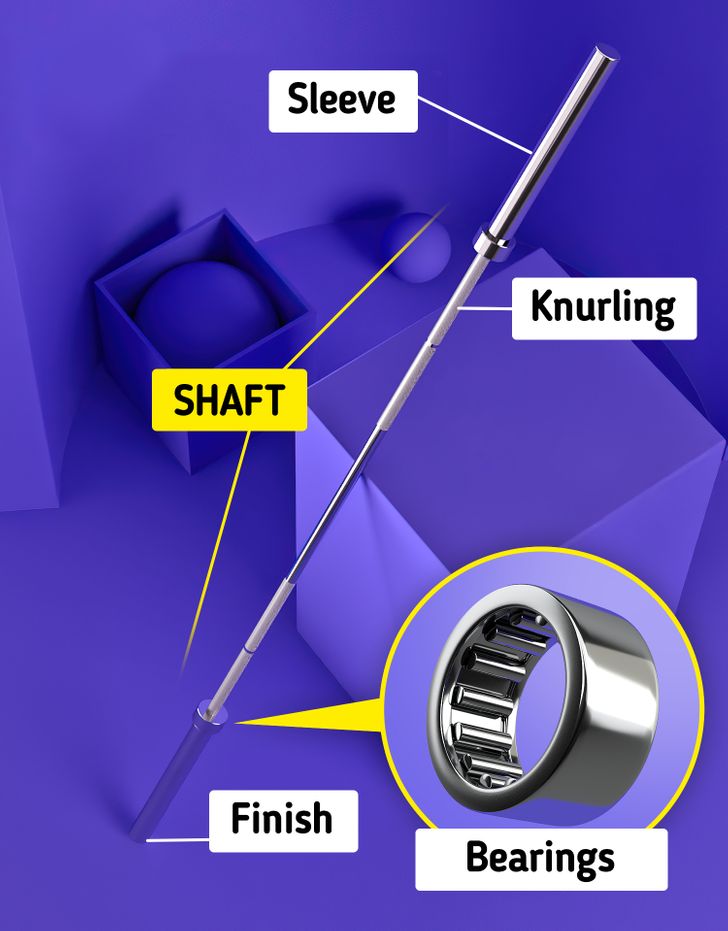
- Shaft — the base part
- Sleeve — the part of the barbell the weights are put on
- Knurling — the barbell is easier to grip by increasing friction
- Bushings or Bearings — a smoother rotation, better for Olympic-style lifts; and bushings are cheaper but have a poorer rotation
- Finish — a protective coating that’s applied to the shaft and sleeves
Differences in bars for men, women, and the youth
Barbells for different athletes are different in size, diameter, and length:
- Men’s barbells weigh 44 pounds, have a diameter of 1.1 inches, and a length of 7.2 feet.
- Women’s barbells weigh 33 pounds, have a diameter of 0.98 inches, and a length of 79 inches.
- Youth barbells weigh 10 pounds, have a diameter of 0.98 inches, and a length of 60-67 inches.
The kinds of barbells for different purposes
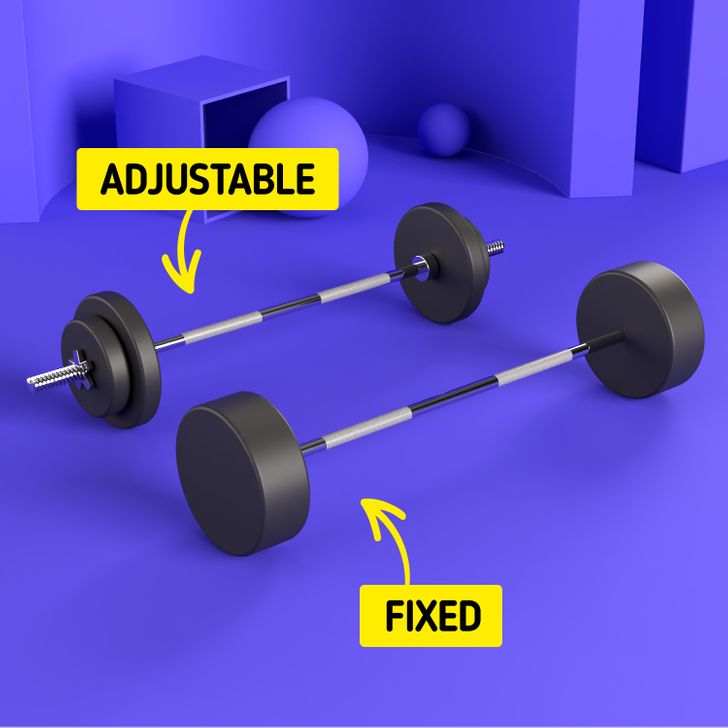
There are 2 basic kinds of barbells:
- Fixed weight barbell: The weight is no more than 110 pounds. Such a construction has 2 advantages. First, there are no moving parts, so nothing will slide or move. And second, it’s durable. It’s great for gyms where there are many non-professionals.
- Adjustable barbell: There is a bar and disks that can adjust the necessary weight. The process becomes more diverse this way.
There are several subdivisions of adjustable barbells.
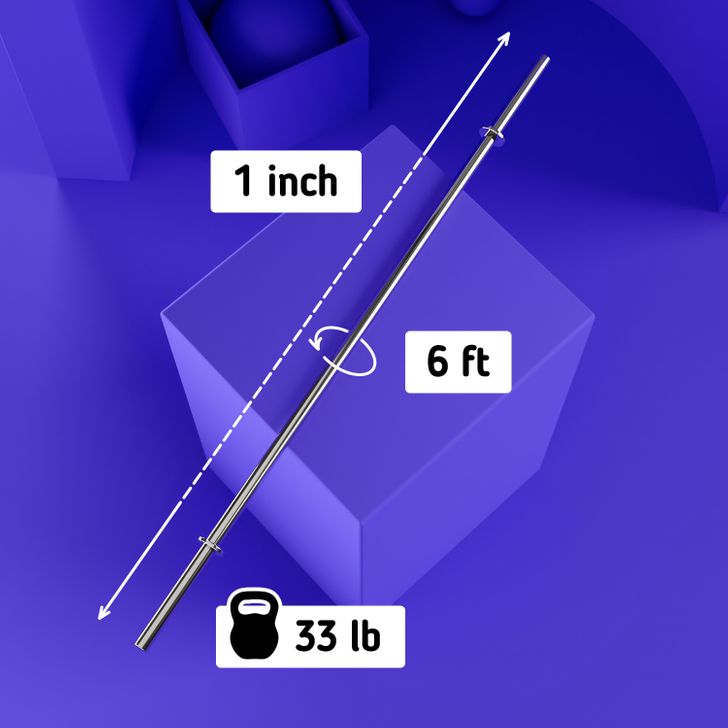
1. Standard bar. It’s 6 feet long, 1 inch in diameter, and weighs 33 lb. It’s not used very often because it’s not very functional.
Pros:
- It’s cheap.
- It’s good for beginners but it won’t let you develop much.
Cons:
- You can’t hold more than 300 lb before it breaks.
- It’s not very long.
- The sleeves don’t rotate, so you will have trouble keeping the balance when standing up.
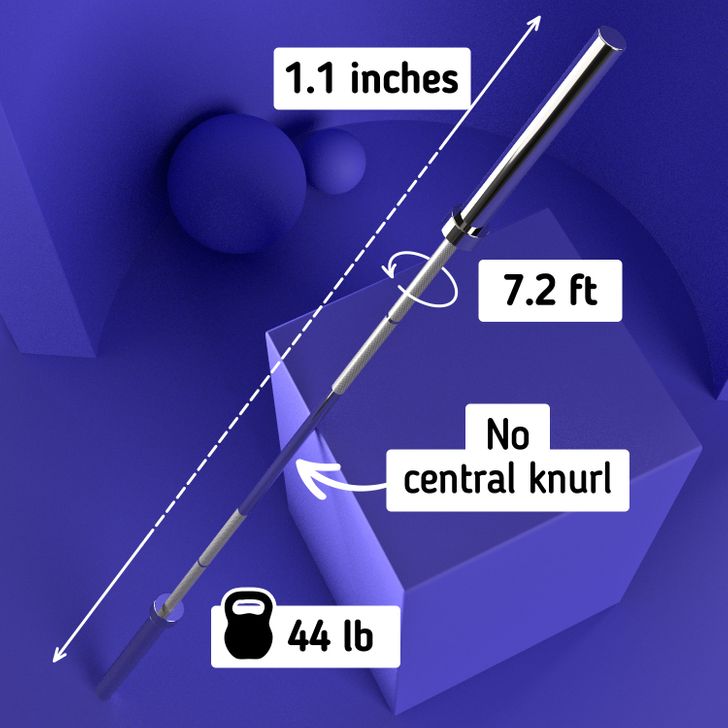
2. Olympic, crossfit bar: The length is 7.2 feet, the diameter is 1.1 inches, and the weight is 44 lb. It’s perfect for explosive lifts. It can also be used for a training program, not only competitions.
Pros:
- It’s thin, and the flexible bar improves shock absorption.
- There are knurl marks.
- There’s no friction on the shoulders.
- The bearings let the disks rotate smoothly to help you keep balance.
Cons:
- They’re great for explosive power but not for increasing your mass.
- The weight is dropped, not put down, so you need more room.
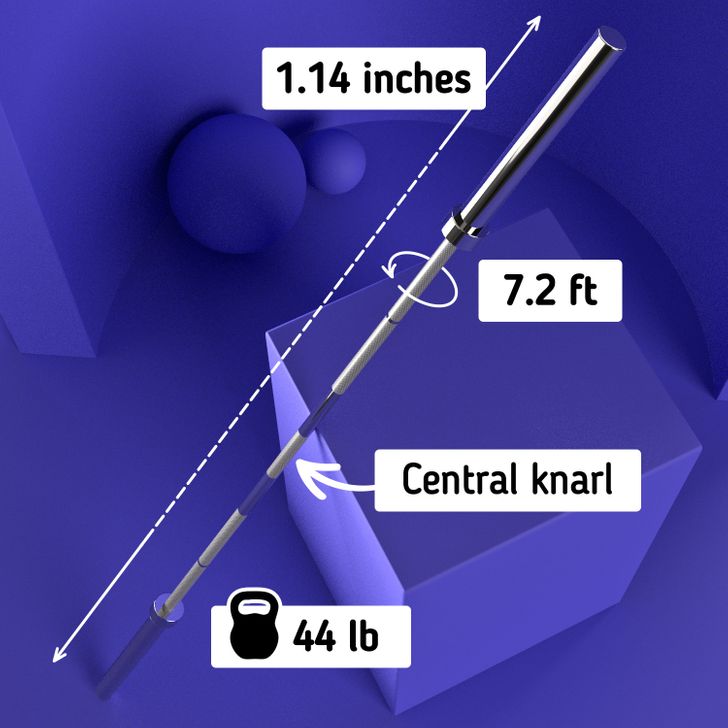
3. Powerlifting bar: It’s great for power development and muscle growth. They have certain characteristics: they’re 7.2 ft, 1.14 inches in diameter, and weigh 44 lb.
Pros:
- The thick, hard bar eliminates tilting when lifting.
- The hard knurl makes the grip very good.
- There are marks for bench pressing.
- The central knurl prevents the bar from rolling down the back.
Cons:
- They’re not good for Olympic lifting.
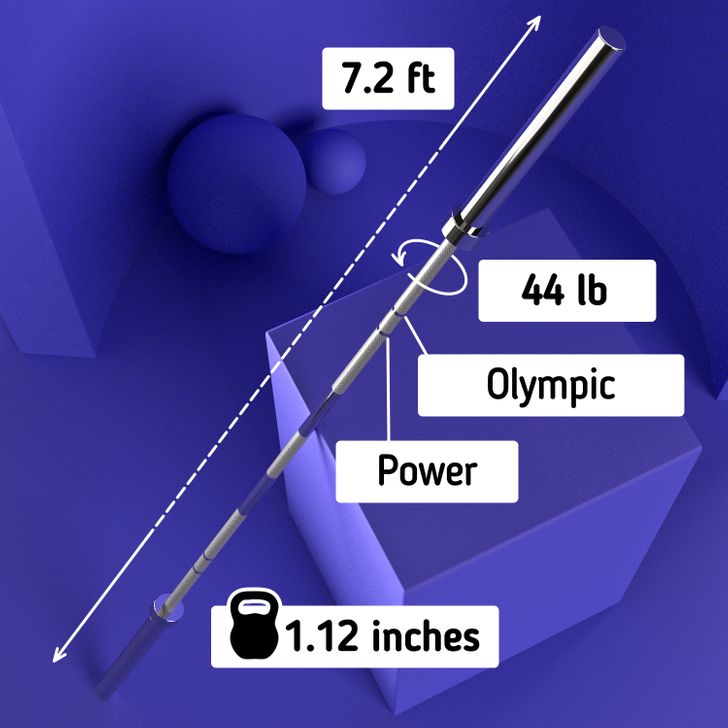
4. Universal. It combines the average characteristics of the Olympic and power bars. The length is 7.2 feet, the diameter is 1.12 inches, and the weight is 44 lb. It’s great for bench presses, squats, and deadlifts.
Pros:
- It has 2 rings for the knurl: the outer one is for the Olympics, and the inner one, for bench presses.
- Standard sleeves in multi-purpose barbells are good for fast and slow reps, and some models may have bearings.
Cons:
- It’s good for strength training and quick Olympic lifts, but it’s not the best choice for either of them.
Other shapes of the bar and ways to use them
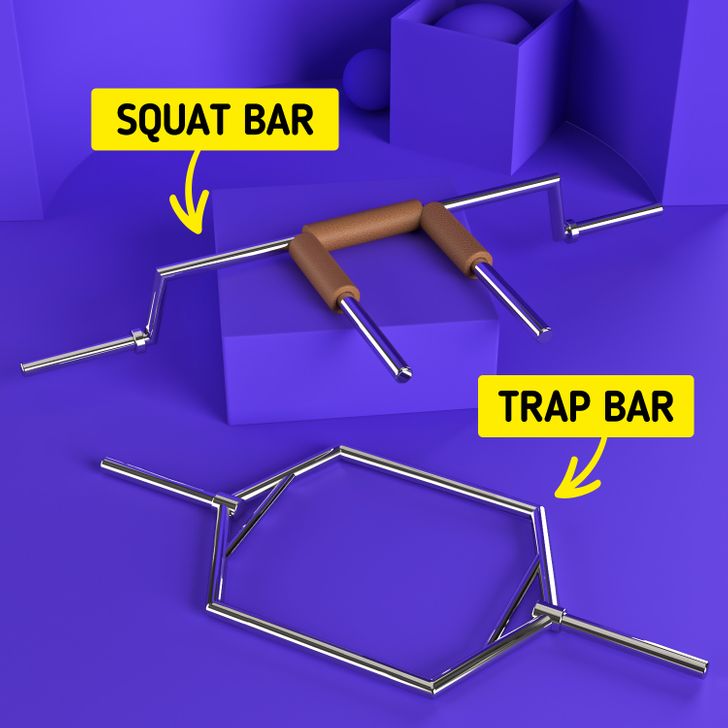
- Squat bar: It’s more convenient to use this for squats than a standard one. Thanks to the construction, the strain on the wrists, shoulders, and elbows is reduced. Besides, it has a built-in pad to soften the friction. This pad is also good for other exercises, such as lunges.
- Trap bar: The shape makes deadweight comfortable and safe. The weight is much closer to the center of gravity than when you lift the bar in front of you, so the lower back strain is greatly reduced.
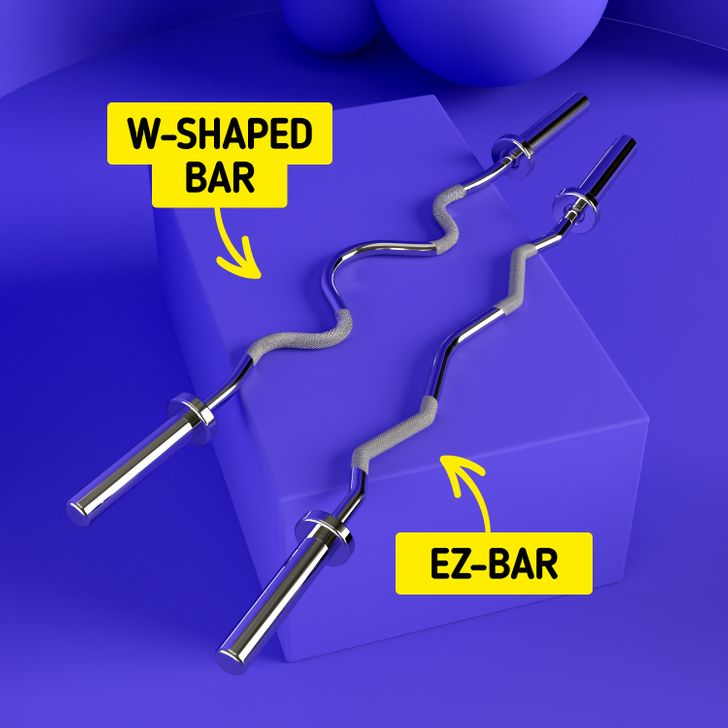
- EZ-bar: This helps train the biceps. It can be great for the triceps, back, and chest.
- W-shaped bar: It’s like EZ but with a more curve in the middle. Such construction helps work out the shoulder muscles that are often ignored.
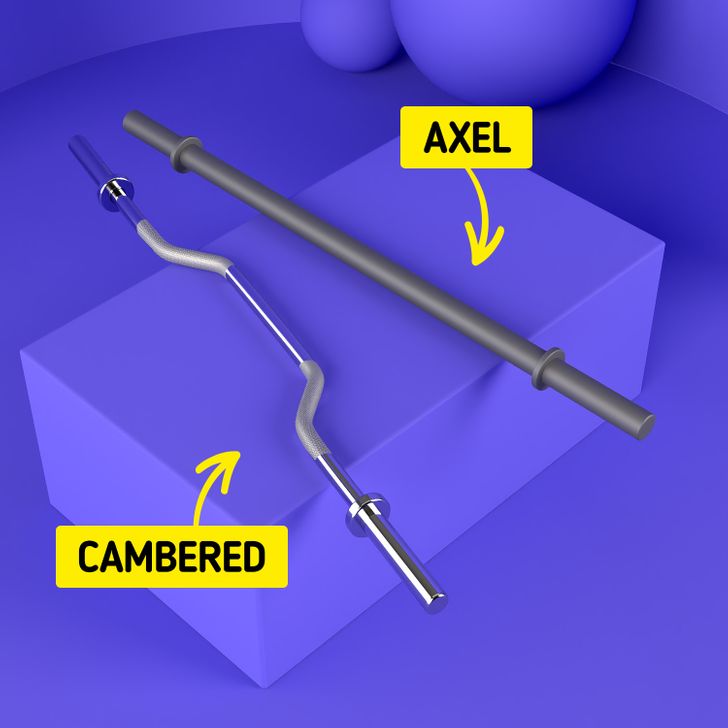
- Axel: It’s thick for a better grip. With a bigger diameter of the bar, there’s more load on the forearms — great for bench presses. At the same time, when you return to the regular barbell, the grip will be stronger, so you will be able to hold a bigger weight and do more reps than before.
- Cambered: The advantage is that it allows the upper part of the body to remain in a vertical position and for you to do squats in the right position and maximum depth. The load is distributed so that the back part works as efficiently as possible.
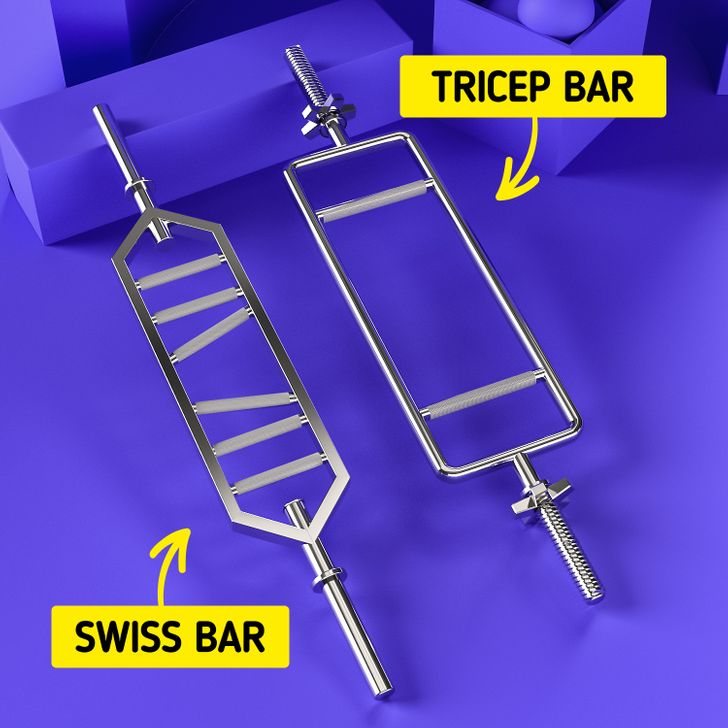
- Tricep bar: It looks like a small trapezoid. It helps to train the triceps in benchpresses and is also good for the biceps, shoulders, and chest.
- Swiss bar: This is like the previous one. The structure is different because there are also diagonal grips. The width can also be different: narrow, average, and wide. If you have pains in your shoulders and wrists, this is a great option.